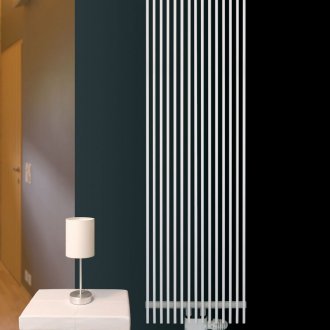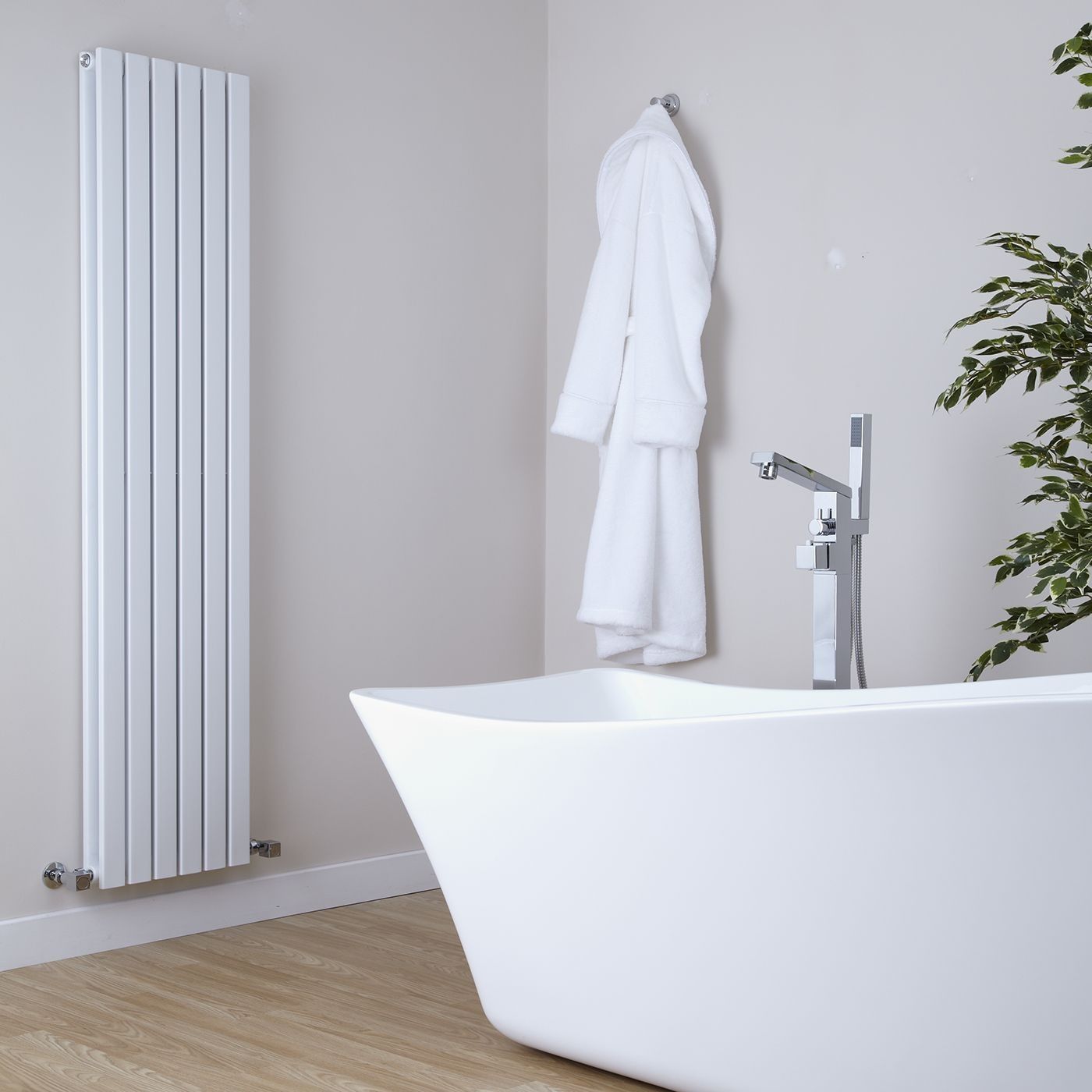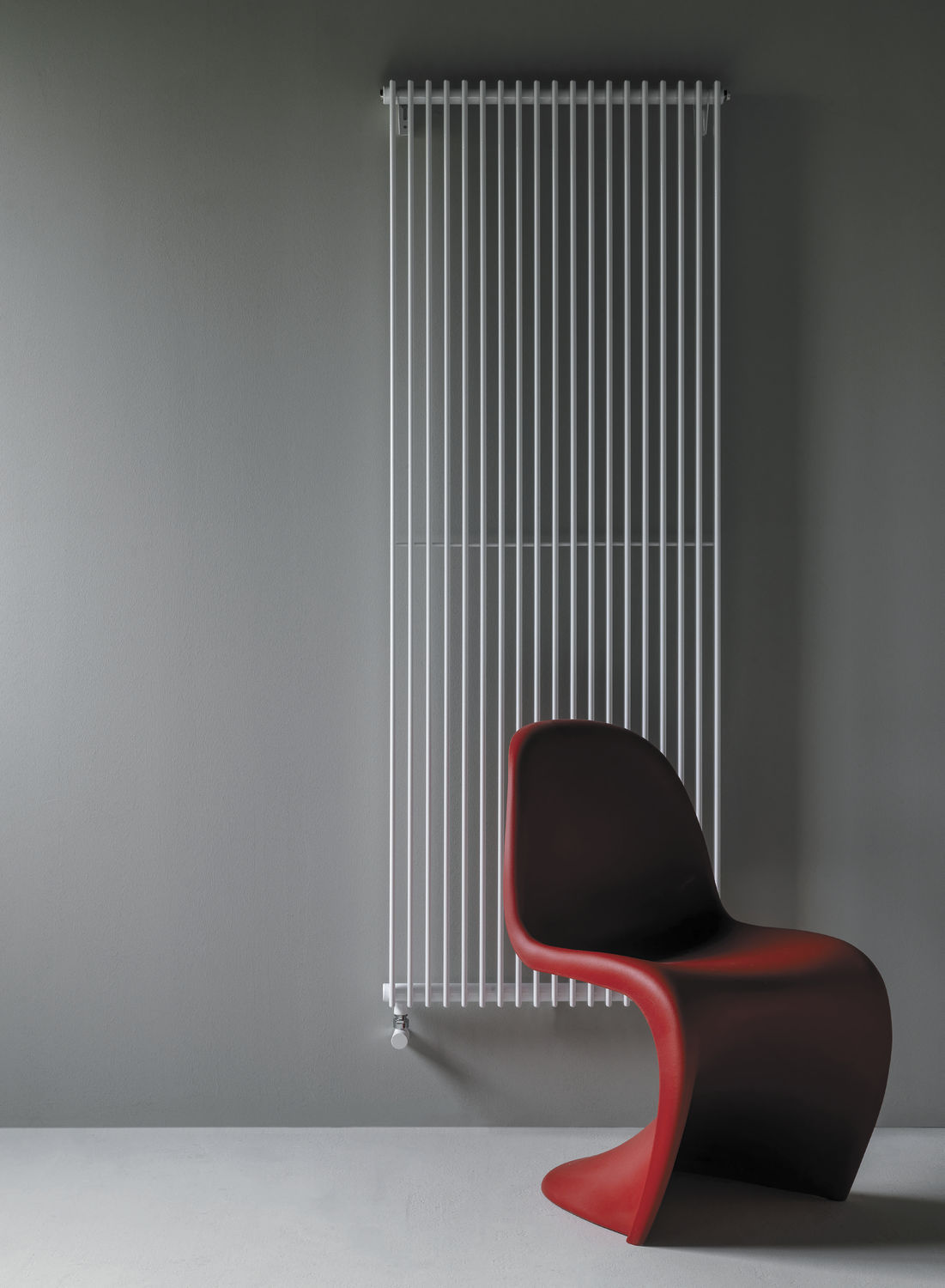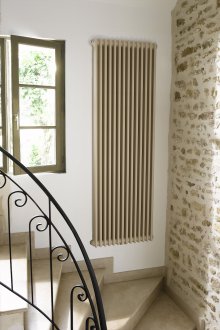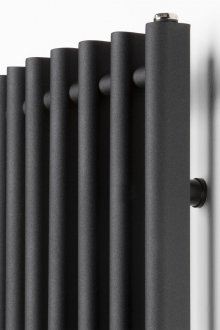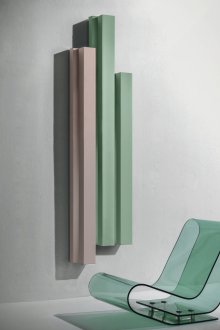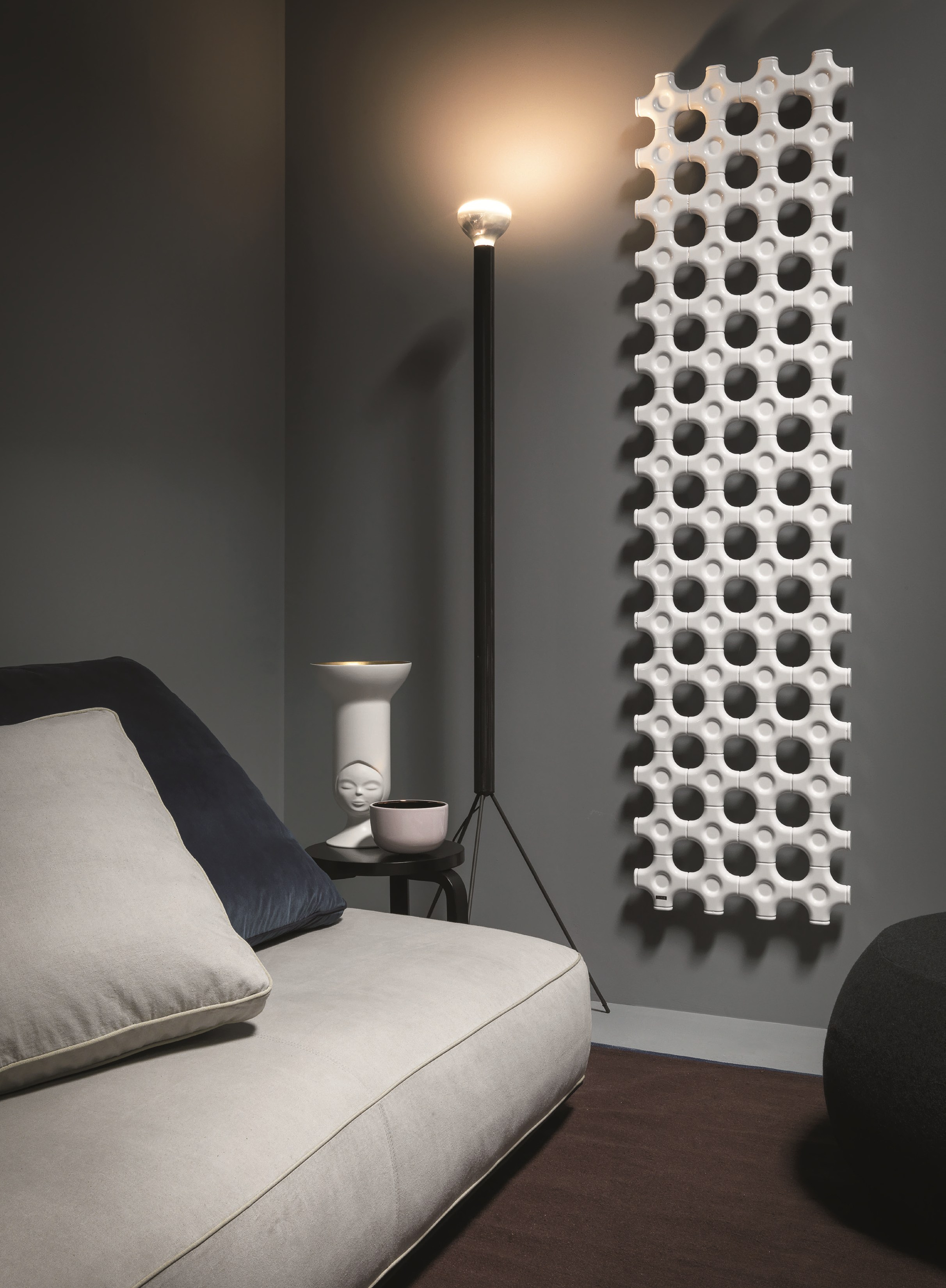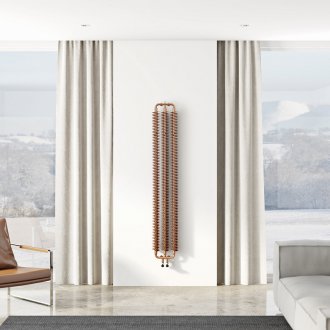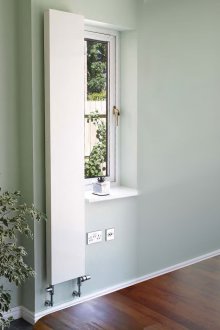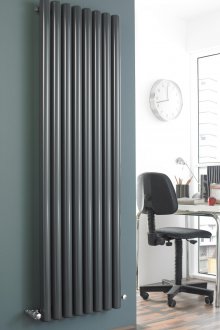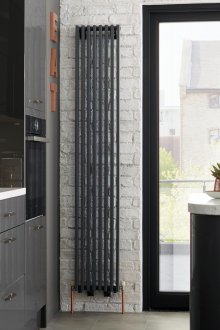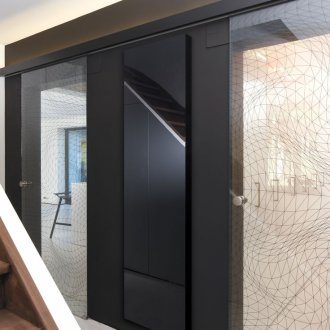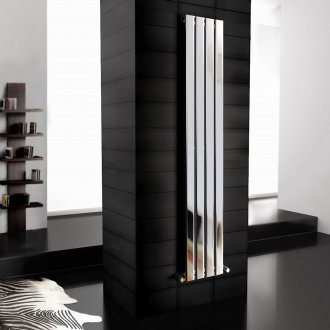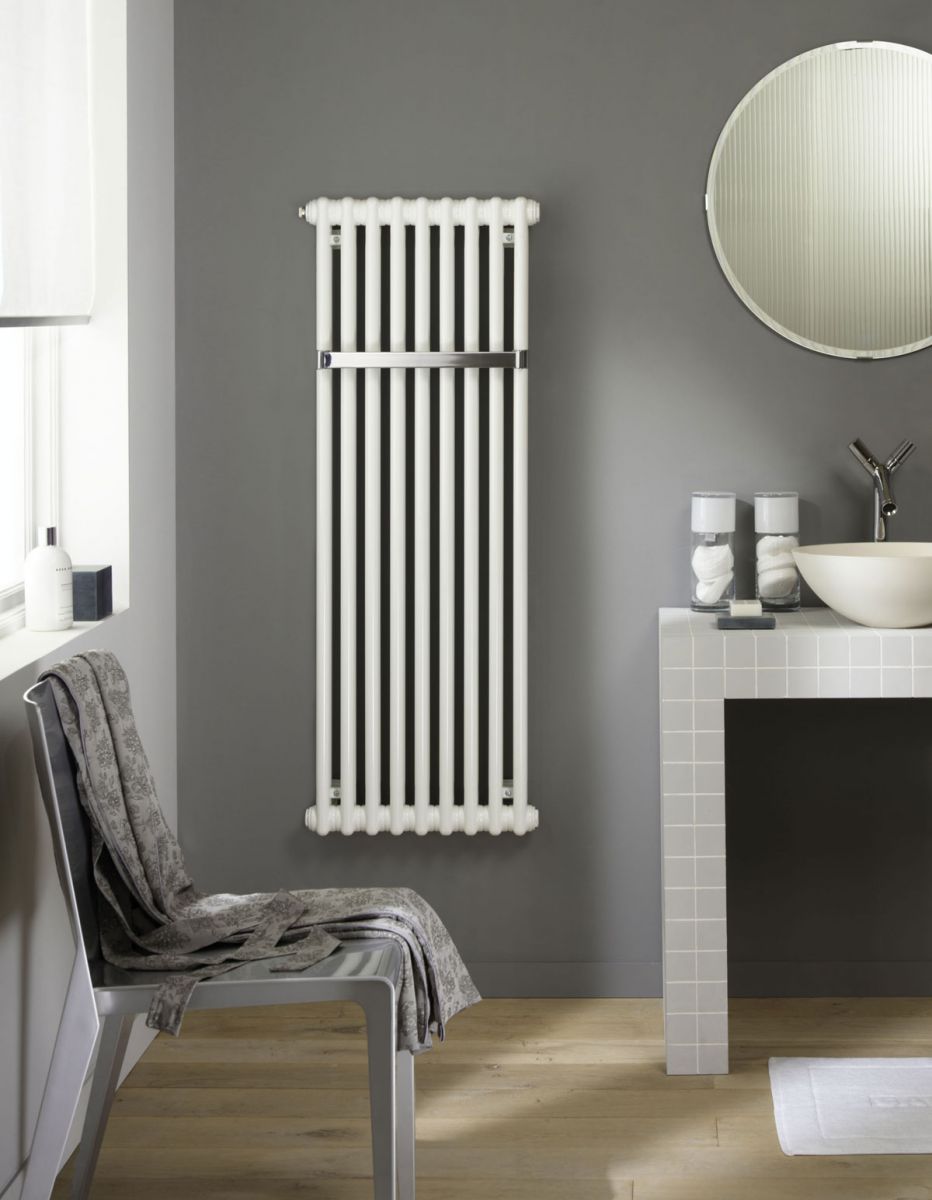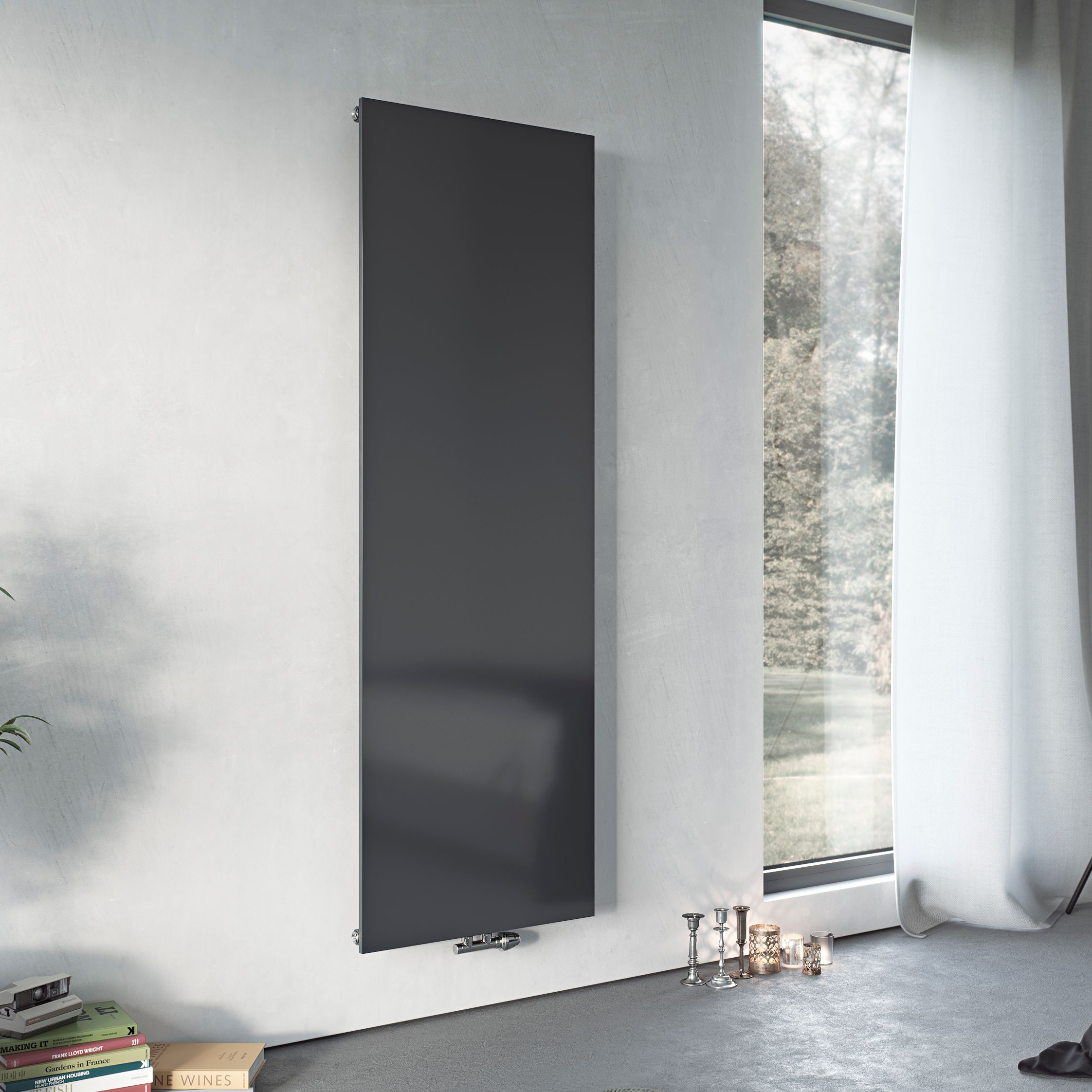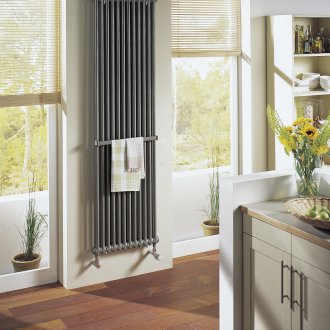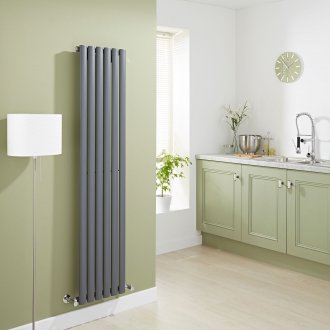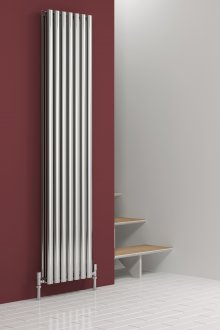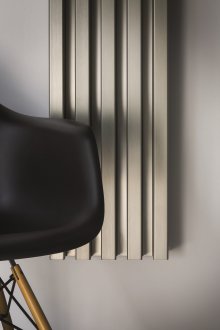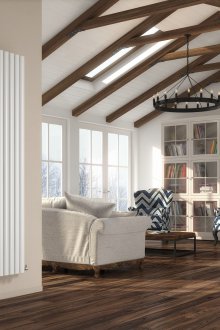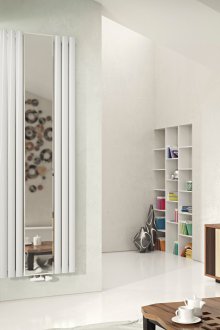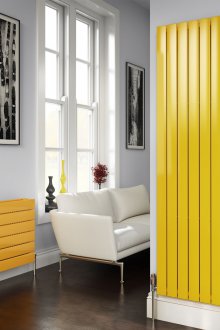Vertical radiators in the house: convenient or not? (25 photo)
Content
Modern canons of interior and comfort dictate rather stringent installation conditions for all life support systems in homes and offices. A particular problem in this case is the heating system of the room, because you can’t hide it inside the wall or behind partitions, you can’t just refuse it, take it out to the utility rooms, the heat must be supplied constantly and most efficiently. To solve these issues, there are vertical radiators.
What is the difference between vertical radiators?
Most of the model range of heating radiators can be described as vertical - this only indicates the location of the heating sections. However, in a separate class, models of small width with significant height are distinguished. There is no clear definition, therefore, a vertical heating radiator can be distinguished from others primarily visually.
Installation Features
Due to the physical characteristics of the distribution of warm air, some requirements apply to the placement of heating radiators. Traditionally, they are installed under the windows, below the window opening, in order to block the flow of cold air from the window and keep the heat in the room. What to do if the windows are panoramic, or part of the wall from the floor to the windowsill is too small to install a battery?
Vertical heating radiators for an apartment, office with panoramic windows, low window sills are an ideal solution to keep warm and to implement many interior solutions. They are also suitable if the area where wall-mounted batteries are to be installed is excessively narrow for mounting traditional options.
Also, do not neglect the design of the room - many models can please not only with practical functions, but also serve as decorative elements to complement the interior.
The most common connection complexity is considered to be the need for bottom connection and removal of coolant. This affects the heat transfer at a low coolant temperature and the presence of air in the pipes, but eliminates the ditching of the walls or the unaesthetic appearance of the pipes on the walls. If the connection is made in an apartment or office with central heating, then the difference in heat transfer is completely invisible, and for radiating excess air all radiators are equipped with special fittings or automatic valves.
Also, the features of the installation should include restrictions on the material of the walls. It is impossible to install heavy radiators on walls made of low-strength materials; this threatens not only with a public accident, but also with the destruction of a partition or wall.
The main types of radiators
Based on the material of manufacture and design, vertical radiators are divided into several main types:
Cast Iron Radiators
Classically verified and long traditional, the material is not always used for the production of unpresentable "accordions".Modern options can have a stylish look, corrugated or smooth surfaces, a variety of colors, be decorated with casting and blackening, and correspond not only to rooms in the "retro" or "Soviet" style.
Today they are produced using the technology of art casting, complemented by suitable taps, plugs, supports and holders. These are rather high radiators than vertical ones, because cast iron retains heat very well, and there is no need for a large surface area. Their disadvantages are the instability of cast iron to directed strong point impacts and heavy weight, so the sections are quite difficult to securely fasten to walls or partitions, they are equipped with legs and stand on the floor in addition to wall mounts.
Steel radiators
Steel radiators have high heat dissipation, heat up very quickly, have low weight and are easy to install regardless of the size and number of sections. However, due to the design, they do not tolerate water shocks, and when connected to a central heating system, they can become a source of leaks. Quick cooling makes them energy-intensive and unsuitable for autonomous heating systems. They are divided into three types: panel, tubular and sectional.
Vertical panel radiator
The vertical panel radiator is the most popular model. Accurate appearance, smooth surface, many options for shades and the ability to keep independently applied drawings allow you to harmoniously fit them into any interior in the form of decorative panels.
Models with convectors create an excellent thermal curtain when placed under the windows. Vertical radiators of this type are often placed under alpine vents, windows under the ceiling, or with the expectation of heating stairs and interfloor passages in private houses. If the apartment has only one floor, then a convector is not needed, since the thermal curtain will be created under the ceiling, and the cost of models without it is much less.
Tubular Vertical Batteries
Tubular vertical batteries look very original and allow you to create structures up to three meters in height, which is perfectly used for rooms with high ceilings. They can have any color, shape (up to twisted ornaments and crossed knots) and bends, as they are made from separate pipe sections and connected by welded manifolds, which allows satisfying the most picky designers. Such designs rarely have sharp corners and are safer for children's rooms. The presence of welds also makes them vulnerable to water hammer, so the likelihood of leaks in central heating systems is high.
Sectional batteries
Sectional batteries made of steel do not have very high operational parameters, but impress with their low price and detachable design. The ability to change the section, build up or vice versa, reduce the surface are sometimes crucial when buying. Sections are not produced above two meters and look very neat in appearance, and they are often given the appearance of artistically decorated panels. Very light weight allows you to connect and install on the walls and partitions of low-strength materials.
Vertical radiators
Vertical aluminum radiators are quite capricious about the quality of the coolant, they are characterized by uneven heating of the structure, and not all models have a corrosion-resistant coating. However, they are relatively easy to install, light in weight, high heat transfer coefficient and aesthetic appearance.
There are models in the production of which an anodization cycle has been added - they perfectly tolerate high pressure and do not require high-quality coolant, but the price is much higher than usual.
The advantage of such radiators is the calculation of the number of sections for each room separately, so in small rooms you can often find narrow radiators.
The shelf life for an aluminum non-separable radiator is standardly declared from 20 to 25 years, but with proper care they can last much longer. The manufacturer gives a shorter warranty period for collapsible structures, but they can also last a very long time with a high-quality coolant and proper operation.
Vertical Bimetal Radiators
Vertical bimetal heating radiators are considered the most efficient and reliable. They are made of internal tubes made of stainless alloy or copper, which are in direct contact with the coolant and an external heat-exchange casing made of aluminum with enamel coating. Outwardly, they are no different from aluminum radiators, but they significantly surpass them in operational qualities, which is especially valuable at the height of the heating season, and justifies their higher cost. Installed in an apartment with a central heating system, they can prevent leaks due to pressure drops in the pipes.
Structurally, there are also collapsible and non-collapsible options, each of which is designed for a specific heat output, and most models are equipped with temperature controllers. Many examples of vertical radiators, including designer models, can be seen on the KZTO website.
Advantages and disadvantages
The positive sides of the vertical radiator include both practical and aesthetic design features:
- Rational use of space indoors. Greater thermal power can be entered into a rather narrow space of the wall by increasing the vertical area of heat transfer.
- The spread of thermal radiation over the entire height of the battery. The location and height of the heating radiator itself can deliver a lot of pleasant minutes to a person, especially when entering the room from the cold.
- The maximum range of models that will translate any design decision.
- Additional features allow you to turn heating radiators into vertical mirrors, clothes dryers, decorative partitions and panels.
- Due to the smaller movement of warm air from the lower layers to the upper ones, the movement of dust is also limited.
New models in the form of a frame for a mirror, a solid or lattice wall panel, a matte or painted partition more and more often find their fans among room designers, and size variations from very narrow to very wide allow not only to correctly set the temperature in the room, but also to serve heat.
Of course, such extraordinary solutions have disadvantages:
- Heat transfer built irrationally. That is, the top of the room is warmer than the bottom, due to the accumulation of warm air under the ceiling. However, many find some advantages in this in the form of warm staircases and interfloor transitions that perfectly heat the installed radiators on the lower floor.
- High probability of air congestion.
- Connection difficulties. It is necessary to carefully hide all the supply pipes, fasteners to maintain an aesthetically pleasing appearance. Vertical and horizontal deviations are also not allowed. It is necessary to use a lower connection, which is rarely optimal for heat transfer.
- The requirements for high strength walls come from the massive structure. The size of the radiators is large enough, and although without filling they seem quite light, their weight along with water is quite large. This imposes some restrictions on the location on the walls.
- The cost of vertical models often far exceeds the price of traditional options.
Today's wealth of forms, layouts and interior variations will not be able to warm every horizontal heating element, so the installation of vertical heating radiators in many cases serves as a salvation. Many models and designs provide an excellent opportunity to competently combine rationalism and creativity, because such unusual and attractive designs will function properly for many years.

